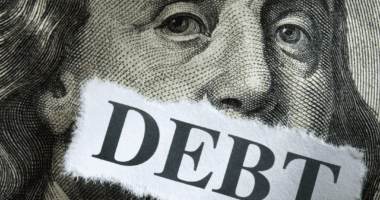The New Gainful Employment Rule Set to Protect Black Borrowers From Predatory Colleges
In October 2023, the Department of Education published its new rule on gainful employment, which is designed to protect students attending career training programs from assuming too much student debt. Career training programs include degree programs at for-profit colleges and non-degree programs at all types of institutions. Alongside the gainful employment regulation, the department released a financial value transparency (FVT) framework that is applicable to all higher-education institutions. Both the gainful employment rule and FVT framework are designed to provide meaningful protection from predatory programs that saddle students with large amounts of debt and low-value degrees. They will also provide useful information about the true cost of postsecondary educational programs to all students, particularly students of color and students from low-income backgrounds, who are disproportionately enrolled in career training programs.
The gainful employment rule uses two metrics to assess whether career training programs are eligible for the federal financial aid programs authorized by Title IV of the Higher Education Act (HEA). The “debt to earnings” metric evaluates the share of annual earnings that a typical recent graduate must put toward their annual student loan payments, which, under this rule, may not exceed 8% of their annual income or 20% of their discretionary income (which is calculated as their median earnings minus 150% of the federal poverty guideline).
This metric has provided meaningful protections in the past. In 2014, the Obama administration issued a gainful employment rule with a similar debt-to-earnings standard. Before it was rescinded by the Trump administration in 2019, the prospect of the rule’s enforcement prompted many low-quality programs to voluntarily shut down.
The second metric is an “earnings premium” metric, which looks at the earnings of a program’s graduates and requires that at least half of them have higher annual earnings than those of a typical high school graduate in the state.
Programs that fail to pass either or both metrics are required to notify their students upon enrollment, registration, and when students make a financial commitment. If a program fails either or both metrics twice in three consecutive years, it will lose eligibility for Title IV federal funding and will not be able to re-establish eligibility for three years.
Under the rule, students are also entitled to information about a program’s cost and program graduates’ expected career and financial outcomes, which will be collected and shared via the FVT framework. The framework requires all institutions that receive Title IV HEA funding to report data on the previous two metrics, as well as costs and sources of financial aid.
While the FVT disclosure rules apply to all institutions that receive Title IV funding, the accountability provisions are aimed at reining in for-profit institutions, which make up the bulk of career training programs, rely heavily on federal financial aid dollars to reach their profit goals, and have a history of engaging in predatory recruitment practices.
A report published by the Senate’s Health, Education, Labor and Pensions Committee in 2012 highlighted the aggressive and misleading recruitment practices that for-profit institutions use to lure students into programs that provide little student support, have poor job placement prospects, and have high tuition and debt loads.
Among the most unscrupulous practices of for-profits is the “pain funnel,” which is a recruiting technique used to pressure a student to enroll and deter them from speaking with financial aid officers about what they would pay. For-profit recruiters may capitalize on a student’s lack of understanding about accreditation systems to inflate a for-profit institution’s prestige. They use questions that create a sense of urgency about the need to obtain a degree or certificate before offering the for-profit program as an easy fix to a prospective student’s problems.
These bad actors often prey on individuals from low-income backgrounds, students of color, and members of the military and exploit their insecurities or feelings of inadequacy, but Black communities are specifically targeted. A recent study by the Student Borrower Protection Center found that majority-Black zip codes are over 75% more likely to have a for-profit college than zip codes where less than half of the population is Black.
Why? Black students are particularly desirable recruiting targets for for-profit institutions because 74% of Black students qualify for some form of Title IV funding, compared to 59% of all students. Yet little of the funding that for-profit institutions receive goes toward students — only 29 cents per dollar received is spent on student instruction. To make matters worse, students who attend these institutions often must take on more student debt than students at other types of postsecondary institutions, and graduates of for-profit institutions have worse outcomes and lower lifetime earnings.
Suffice it to say, for-profits are a major driver of the Black student debt crisis. These institutions only enroll 9% of students, but their students account for half of all student loan defaults. While only a third of all undergraduates are Black, Black students make up nearly half of all for-profit students and are three times more likely to attend a for-profit institution than their non-Black counterparts, as Black students are disproportionately targeted by for-profit institutions. Black students who attend four-year undergraduate for-profit programs hold an average student debt balance of $47,259. By comparison, Black students who attend four-year private nonprofit institutions or four-year public institutions have an average debt balance of $39,927 and $32,669 respectively.
In 2021, the Federal Trade Commission established an initiative to curb fraud by for-profit institutions, focusing on the false promises made to prospective students about job and earnings prospects, but manipulative practices by for-profit recruiters persist. That’s why the new gainful employment rule and FVT framework, which go into effect on July 1, 2024, are steps in the right direction. They will ensure that prospective students have the information they need to make informed choices and avoid taking on more debt than they can reasonably be expected to pay off. Going forward, Black and low-income students will have some protections from the deceitful practices of low-value, high-cost programs. Best of all, the new metrics will hold for-profit programs accountable and require them to make good on their promises to leave students better off than those with only a high-school education.








